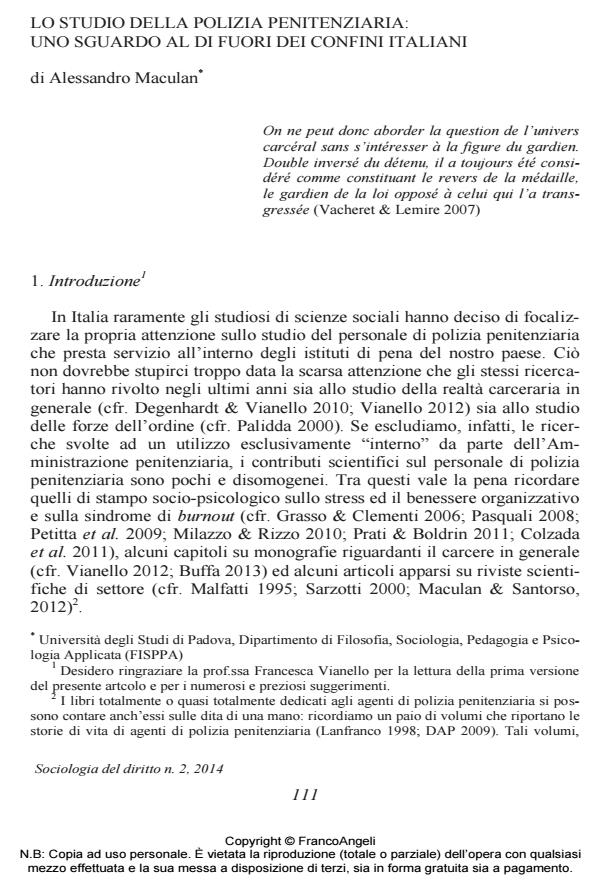Studying the prison officer corps: taking a look outside Italy
Journal title SOCIOLOGIA DEL DIRITTO
Author/s Alessandro Maculan
Publishing Year 2015 Issue 2014/2
Language Italian Pages 26 P. 111-136 File size 137 KB
DOI 10.3280/SD2014-002005
DOI is like a bar code for intellectual property: to have more infomation
click here
Below, you can see the article first page
If you want to buy this article in PDF format, you can do it, following the instructions to buy download credits

FrancoAngeli is member of Publishers International Linking Association, Inc (PILA), a not-for-profit association which run the CrossRef service enabling links to and from online scholarly content.
Italy’s social scientists have seldom tackled the study of the prison officers who staff the country’s penitentiaries. This is not the case of other countries, in particular in the English-speaking world, where research into this issue started developing in the seventies of the last century, unquestionably enabling scholars to achieve a richer and more profound understanding of the prison system. This article sets out to go over the leading fields of research in this area, together with the results of studies conducted outside Italy, investigating the staff responsible for prison population surveillance. The focus is therefore on their organisational culture, on the process for becoming a prison officer, on their relations with inmates, on the influence of gender in their work and on the consequences of working in prisons.
Keywords: Prison officers - Prison - State of the art - Prison work - Prison Research
- The "left" and "right" arm of the prison: Prison work and the local legal culture of the penitentiary Alessandro Maculan, Luca Sterchele, in Oñati Socio-Legal Series /2022 pp.1492
DOI: 10.35295/osls.iisl/0000-0000-0000-1310 - Bourdieu in carcere Alessandro Maculan, in Sociologia del diritto /2023
DOI: 10.54103/1972-5760/20943 - Doing Shifts Serena Franchi, pp.33 (ISBN:978-3-031-44552-1)
Alessandro Maculan, Lo studio della polizia penitenziaria: uno sguardo al di fuori dei confini italiani in "SOCIOLOGIA DEL DIRITTO " 2/2014, pp 111-136, DOI: 10.3280/SD2014-002005